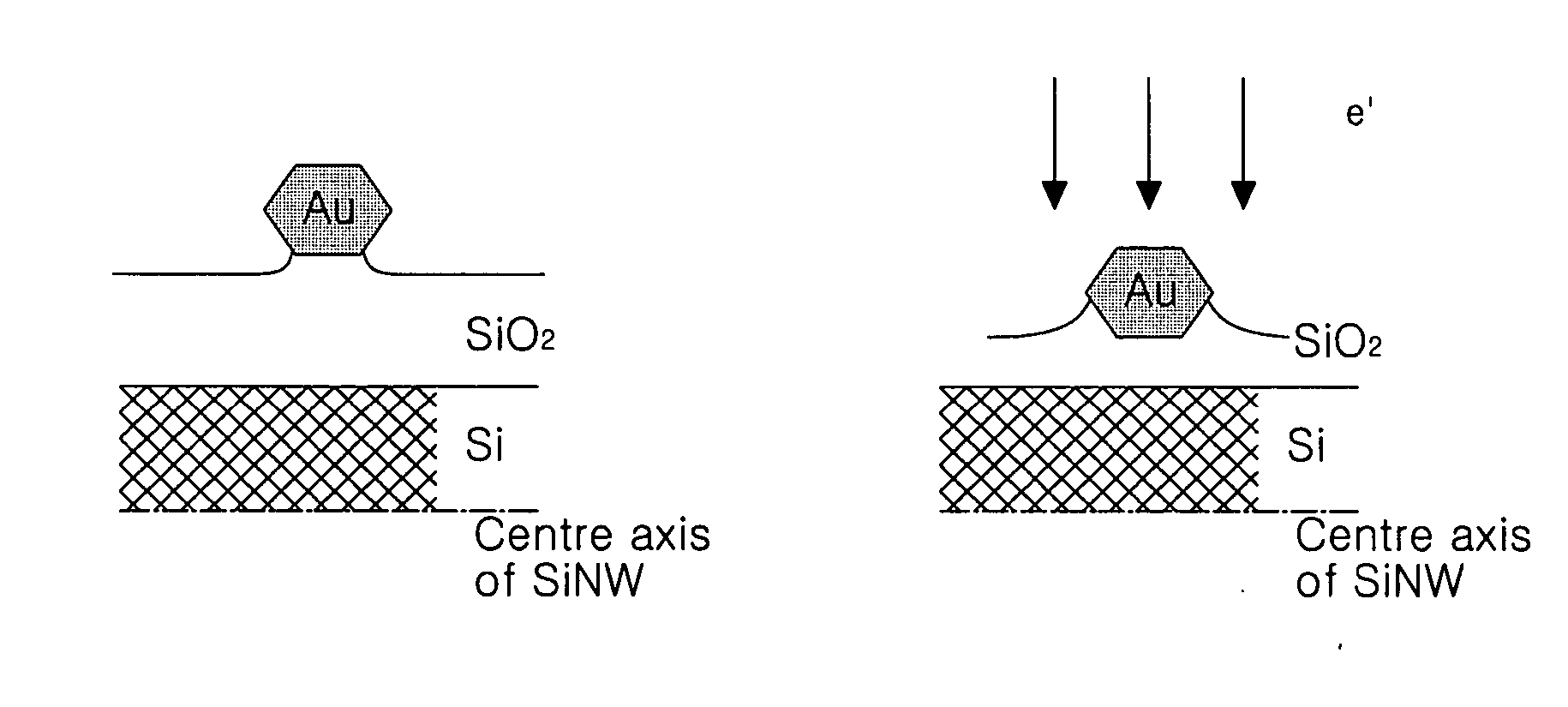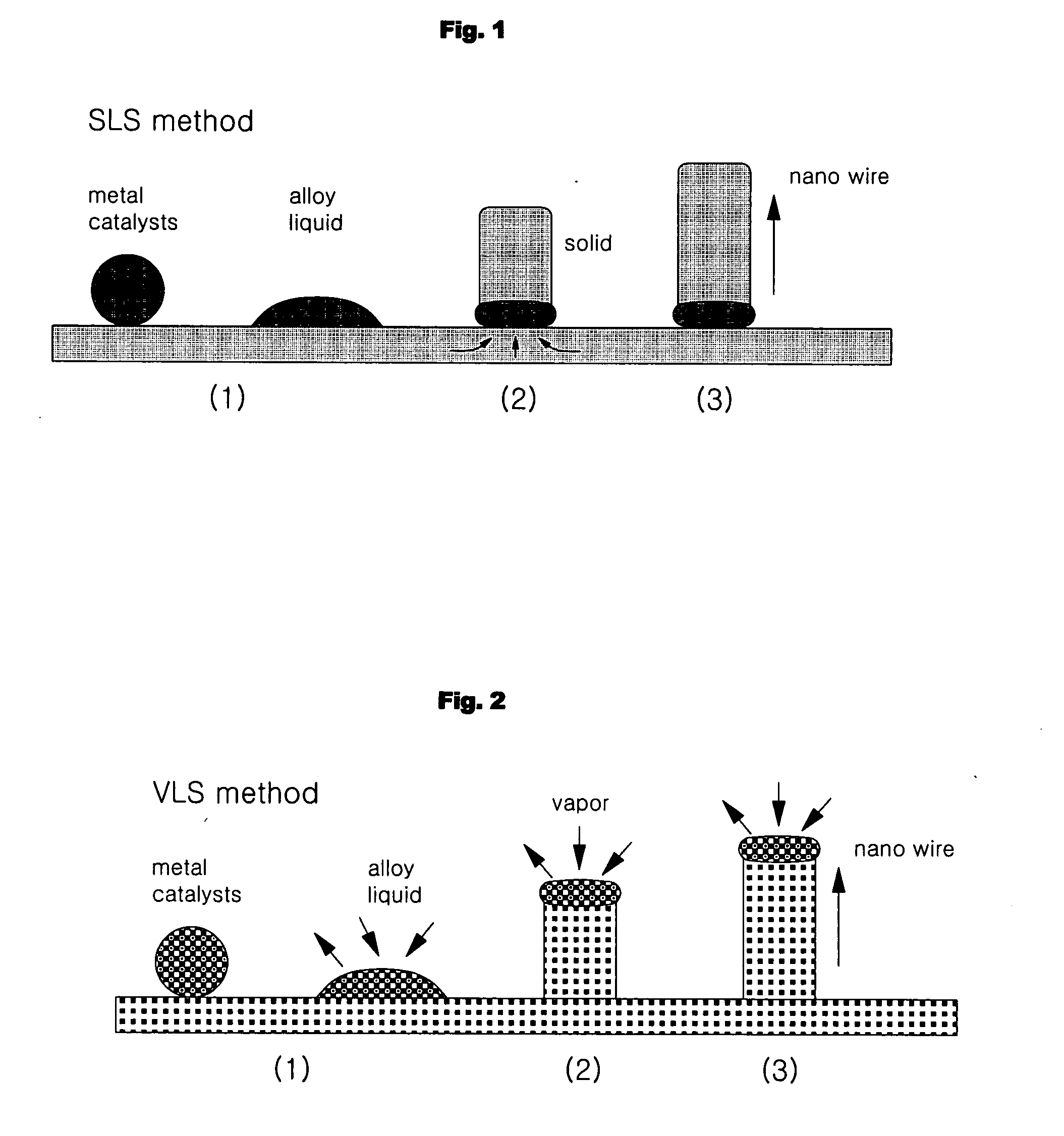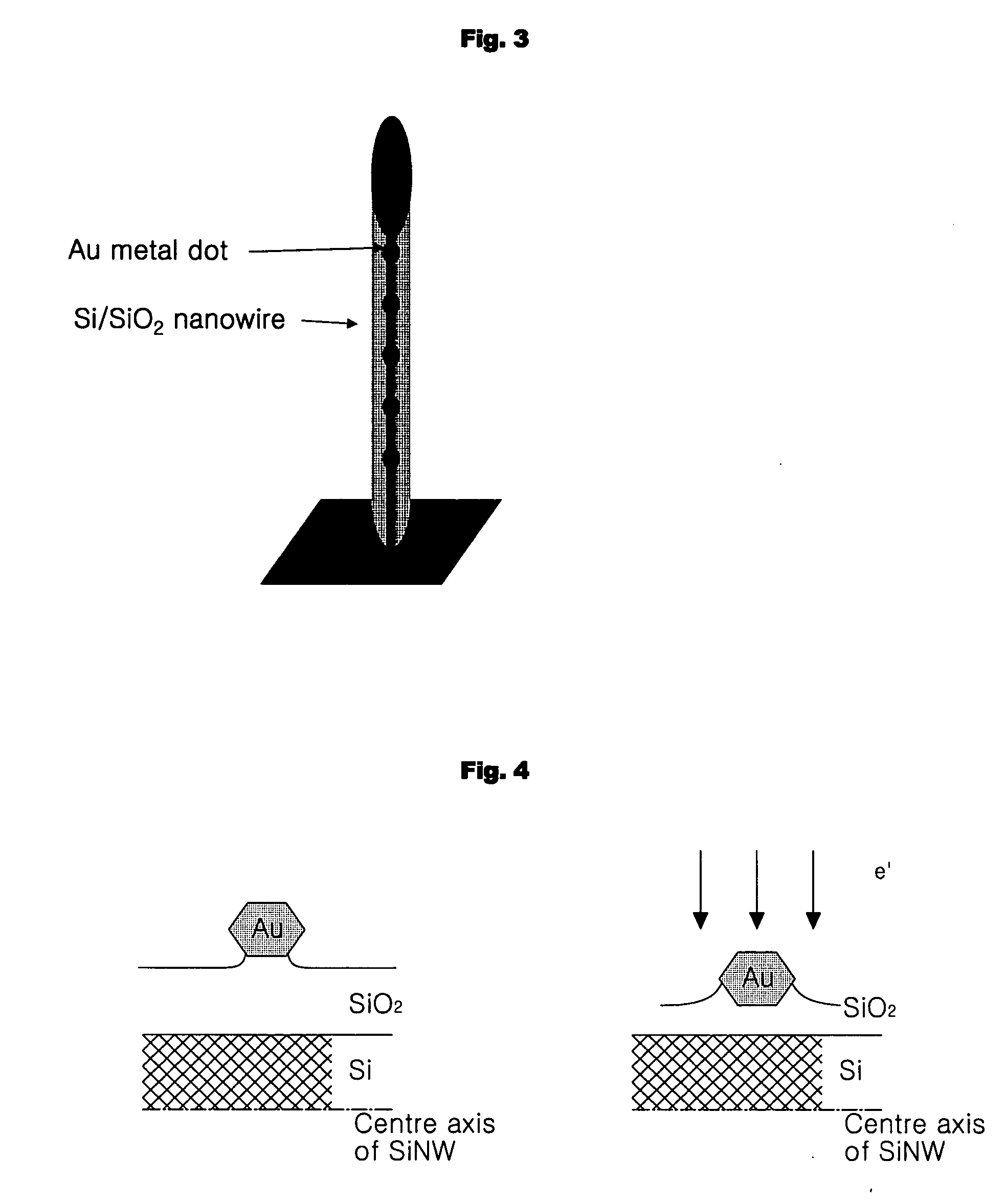Nanowires comprising metal nanodots and method for producing the same
a technology of nanowires and metal nanodots, which is applied in the field of nanowires including metal nanodots, can solve the problems of difficult to form pores having a size, unsatisfactory mass production of nanowires, and limited template approaches
- Summary
- Abstract
- Description
- Claims
- Application Information
AI Technical Summary
Problems solved by technology
Method used
Image
Examples
example 1
Production of Silicon Nanowires
[0062] A natural oxide film was removed from a p-doped silicon substrate using an organic cleaning solvent or hydrofluoric acid. Gold (Au) nanoparticles (Nipponpaint Co., Ltd.) as catalyst particles were spin-coated onto the cleaned substrate to a thickness of about 30 nm. Subsequently, the coated substrate was placed in a reaction furnace, and the surface of the substrate onto which the nanowires would be grown was directed downward. The substrate was heated at a rate of about 10 to about 15° C. per minute, and maintained at a pressure of about 500 torr while argon (Ar) was fed into the furnace at a flow rate of about 100 sccm. The heated substrate was maintained at about 1000° C. for 30 minutes to grow the nanowires and metal nanodots. The resulting structure was slowly allowed to cool to about 700° C. under ambient conditions to complete the growth of the nanowires.
[0063] The structure of the nanowires was examined by transmission electron microsc...
PUM
 Login to View More
Login to View More Abstract
Description
Claims
Application Information
 Login to View More
Login to View More - R&D
- Intellectual Property
- Life Sciences
- Materials
- Tech Scout
- Unparalleled Data Quality
- Higher Quality Content
- 60% Fewer Hallucinations
Browse by: Latest US Patents, China's latest patents, Technical Efficacy Thesaurus, Application Domain, Technology Topic, Popular Technical Reports.
© 2025 PatSnap. All rights reserved.Legal|Privacy policy|Modern Slavery Act Transparency Statement|Sitemap|About US| Contact US: help@patsnap.com



